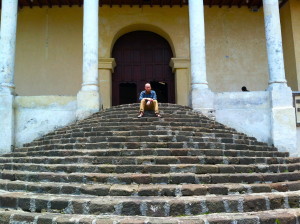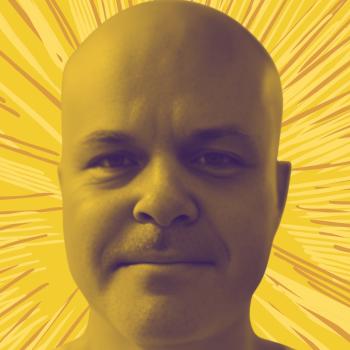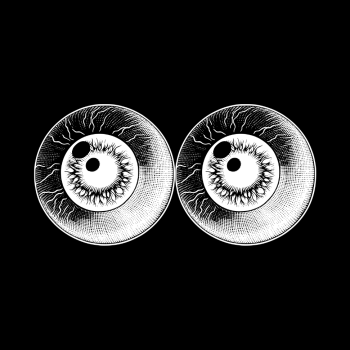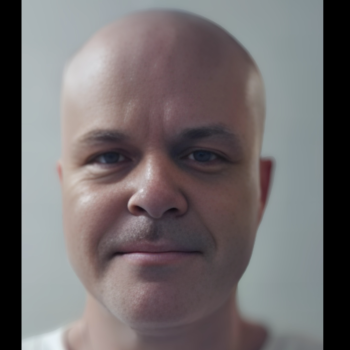
San Pedro La Laguna, Guatemala
When I stepped off the boat in San Pedro La Laguna, I was greeted by a giant poster proclaiming, “Jesus is the way, the truth, and the life. No one comes to the Father but through him.” Now, I have been a Christian long enough to know that posters reciting variations of John 14:6 usually are not placed by people inviting dialogue about the ins and outs of spirituality. There is no question that San Pedro is a conservative place, about seventy percent of the residents are Roman Catholics and thirty percent are evangelical Christians, many also practice traditional Mayan religions alongside Christianity. At night one can hear the whistles of the policía éticos or ethics police chasing the drug using and sex-craving gringos all over the tourist district. Sometimes I think the men who run the policía éticos get close enough to take a nice long gander before they blow their whistle, literally or figuratively. Regardless, there is a clash of cultures in this place, one liberal western and one distinctly conservative Mayan.
The Mayan people have endured much in this region. Since the Spanish conquered present day Guatemala, there has consistently been conflict bubbling beneath the surface between persons of Mayan descent and persons of Spanish descent. The conflicts have exploded into all out war on numerous occasions. There has never been a fair fight. The Mayans have always been outgunned. Often their only chance at deflecting total defeat is to endure. One such occasion of endurance occurred during the Guatemalan Civil War that lasted from 1960 to 1996.
Yesterday, 86-year-old Rios Montt, the former President of Guatemala from 1982 to 1983, was convicted of genocide in the deaths of thousands of people of Mayan descent and sentenced to 80 years in prison. During the civil war, the government and military consistently exterminated people of Mayan descent. The United States consistently backed these governments. It is believed that the Guatemalan military killed over 180,000 people during the war, 90% of which were of Mayan descent, many were killed defenseless in one of the over 400 massacres that have been documented throughout the nation. There were death squads and hit lists. The only way to break the endurance of the Mayan people was extermination.
There were courageous pastors and priests all over the Mayan regions who said no to the atrocities. One such priest was Father Stanley Rother of Oklahoma. Father Rother was responsible for the parish in Santiago Atitlan, which is very close to San Pedro San Pedro La Laguna, for many years. In 1981, after enduring numerous threats for his work and protection of the Mayan people, persons with close ties to the military broke into the parish residence and exterminated Father Rother as well. Tens of thousands of people mourned the loss of their beloved “Ap’las,” meaning father in the native Mayan dialect. Though his body is buried in Oklahoma, his heart is buried in the parish church in Santiago Atitlan. Yesterday, I prayed with his heart and the bullet that killed him, which is lodged in the floor of the parish.
This is my third time visiting San Pedro La Laguna. I have stayed with the same family every visit. They are beautiful people. The grandmother is in her late eighties, the parents are both in their sixties, and their are four children, three of which have children of their own, all living in the same house or close by. I have had many conversations with them about their brothers and cousins who were killed during the Civil War. When I ask why they died, they respond for being Mayan and loving freedom. Though the war is over, there is still tremendous discrimination and exploitation against persons of Mayan descent. These are a people who are painfully aware of the consequences of hate.
Last night, I was with the entire family and the conversation got interesting. We talked for a brief moment about the conviction of Rios Monte and then the conversation shifted to questions about the church I pastor, The Church at Mable Peabody’s. When I told them that about ninety percent of our church is lesbian, gay, bisexual, or transgender, you would have thought I told them that Jesus comes down in drag from heaven and preaches a sermon to us every Sunday. It was that foreign to them. I asked them to think about the oppression that they have experienced and are experiencing for being Mayan. I told them that in the United States, here in Guatemala, and around the world the situation is similar for persons who are lesbian, gay, bisexual, or transgender. I spoke of the people in my church who have endured physical and spiritual violence for their sexuality and gender identity. After much conversation, they began to get it. The family has always known that I have a heart for the marginalized and oppressed no matter the location. Finally, after more explanation, the mother said, “Jesus is always with the marginalized. Jesus is with the homosexual and the transgender. Jesus is with us both. We are hated and they are hated. They are us and we are them.” Despite the fierce religious conservatism of this region, hate translates.
Thankfully, so too does love…
Amen.












